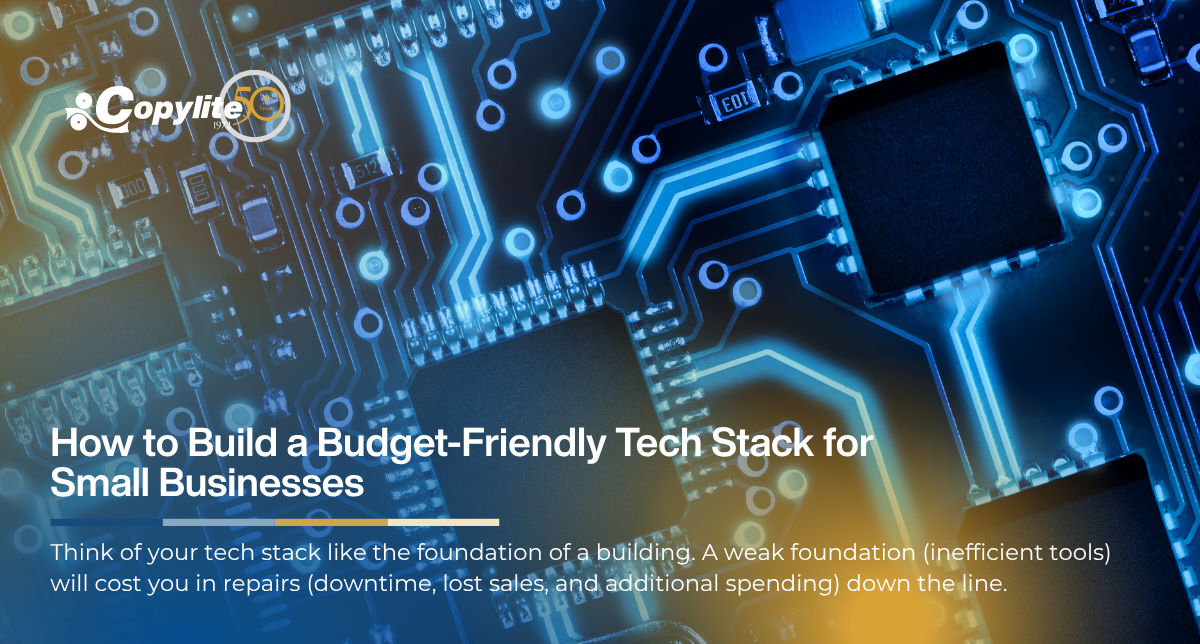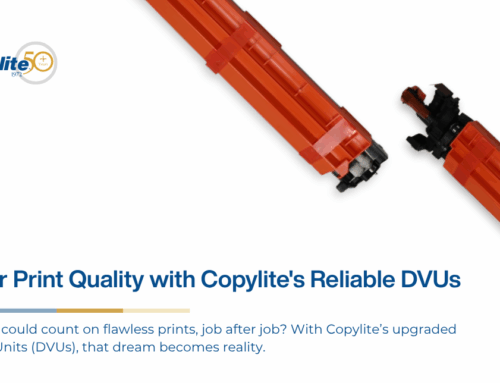Building a tech stack for your small business can feel like solving a Rubik’s Cube blindfolded. With so many tools out there, finding the right mix that supports your goals without tanking your budget is no easy feat. But fear not—this guide will show you how to assemble a cost-effective tech stack that delivers big results without the hefty price tag.
Whether you’re the CEO keeping an eye on costs, the Purchaser scouting smarter deals, or the IT Professional tasked with avoiding tech meltdowns, we’ve got actionable steps to help you streamline your tech setup.
What Is a Tech Stack (and Why Is It Crucial)?
A tech stack is like the toolbelt of your business. It’s a collection of software, tools, and platforms that work together to keep your operations smooth and efficient. It includes
everything from communication apps and project management tools to CRM software and cybersecurity solutions.
Why Small Businesses Need the Right Tech Stack
- Cost Efficiency: The right tools can save you money by automating repetitive tasks.
- Improved Productivity: Software designed for small businesses can help you work smarter, not harder.
- Scalability: A good tech stack grows with your business, sparing you the headache of frequent replacements.
Starting with the right components ensures you’re not paying for features you don’t use—or scrambling to upgrade later.
Quick Insight: Think of your tech stack like the foundation of a building. A weak foundation (inefficient tools) will cost you in repairs (downtime, lost sales, and additional spending) down the line.
Step 1: Assess Your Business Needs
Before you even think about downloading another free trial, take a closer look at your current setup. What’s working? What’s not? Be brutally honest.
Key Questions to Ask:
- What Are Your Pain Points?
-
- Are employees drowning in manual tasks?
- Is customer communication inconsistent across your teams?
- What Are Your Goals?
-
- Do you want faster project turnarounds?
- Are you trying to increase sales or improve customer retention?
- What’s Your Budget?
-
- Decide on a realistic monthly or annual tech spend that won’t pinch your business finances.
Evaluate Current Tools:
- Are there tools you’re underutilizing?
- Are you paying for overlapping features across multiple subscriptions?
Pro Tip: Conduct a quick audit by listing your tools, their monthly costs, and any unused features. You might discover you’re paying for two email tools but only using one!
Step 2: Start with the Essentials
Forget about the shiny, overhyped software with dozens of features you’ll never touch. Instead, focus on core categories that every small business needs.
1. Communication and Collaboration
- Why It’s Essential: Clear communication keeps everyone on the same page, while collaboration tools improve teamwork and productivity.
- Budget-Friendly Picks:
-
- Slack (free plan for small teams): Ideal for real-time messaging.
- Microsoft Teams (free tier available): Combines video calls, chat, and file sharing effortlessly.
2. Project Management
- Why It’s Essential: Keeps teams organized, deadlines clear, and workflows streamlined.
- Budget-Friendly Picks:
-
- Trello (free plan): Uses boards and lists for simple task tracking.
- ClickUp (starts free): Offers more advanced features like time tracking to scale with your business.
3. Customer Relationship Management (CRM)
- Why It’s Essential: Helps you manage leads, track sales, and maintain happy customers.
- Budget-Friendly Picks:
-
- HubSpot CRM (free): Tracks contacts, sales pipelines, and more.
- Zoho CRM (affordable paid plans): Balances cost and functionality with multiple tier options.
4. Finance and Accounting
- Why It’s Essential: Keeps business expenses in check and tax filing stress-free.
- Budget-Friendly Picks:
-
- Wave (100% free): Perfect for small businesses for essential bookkeeping.
- QuickBooks Online (affordable plans): Scalable for growing needs.
5. Cybersecurity
- Why It’s Essential: Protects sensitive business data and prevents costly breaches.
- Budget-Friendly Picks:
-
- LastPass Teams (affordable paid plans): Simplifies password management across your team.
- Bitdefender (low-cost antivirus): Ensures your devices are secure.
Reminder: Never compromise on security—it’s better to be safe than sorry!
Step 3: Look for Integration-Friendly Tools
Your tools don’t just need to work; they need to work together. Choose options that can integrate seamlessly, saving your team time and hassle.
Questions to Consider:
- Does your project management software sync with your CRM?
- Can you automate data sharing between tools (e.g., using a Zapier workflow)?
Integration-friendly tools prevent data silos, reduce manual entry, and make processes more efficient. For example, connecting your email marketing platform to your CRM can automate your lead nurturing efforts, freeing up valuable time.
Pro Tip: Check for popular integrations or open APIs before committing to new software.
Step 4: Utilize Free Tools and Trials
There’s no shame in going for the free or freemium version of software—especially if you’re testing it out. Just make sure to monitor limitations.
Smart Trial Strategies:
- Start Small: Assign one department or team to test the tool.
- Track Metrics: Measure productivity, time savings, or cost reductions during the trial.
- Evaluate Ease of Use: A tool may look fantastic on paper but could frustrate your team in practice.
Free Tools to Explore:
- Canva Free (design and marketing software)
- Google Workspace Free Tier (emails, docs, and more for smaller setups)
- Zapier Free Plan (for basic integrations)
⚠️ Warning: Pay attention to free tool limitations (e.g., storage caps, smaller user limits). You don’t want surprises once you scale.
Step 5: Prioritize Scalability
Choose tools that grow with you. Your needs today might look entirely different a year from now. The right tech stack should handle growth without constant changes.
How to Spot Scalable Software:
- Flexible Pricing Tiers: Can you upgrade seamlessly as your business expands?
- Feature Growth: Will additional features become available as you pay more?
- User Limits: Ensure your tools can accommodate a growing team size.
Insight: Investing now in scalable tools prevents headaches (and unexpected expenses) later.
Final Thoughts
Building a budget-friendly tech stack for your small business doesn’t mean cutting corners—it means making the right choices. By starting with your needs, focusing on essentials, and opting for integration-ready and scalable tools, you can create a tech ecosystem that works for your business without emptying your wallet.
Remember, the goal isn’t just affordability—it’s long-term efficiency and growth. Keep evaluating your tools as your business evolves to ensure they’re delivering maximum value.
Now, go ahead and stack your way to smarter success!






